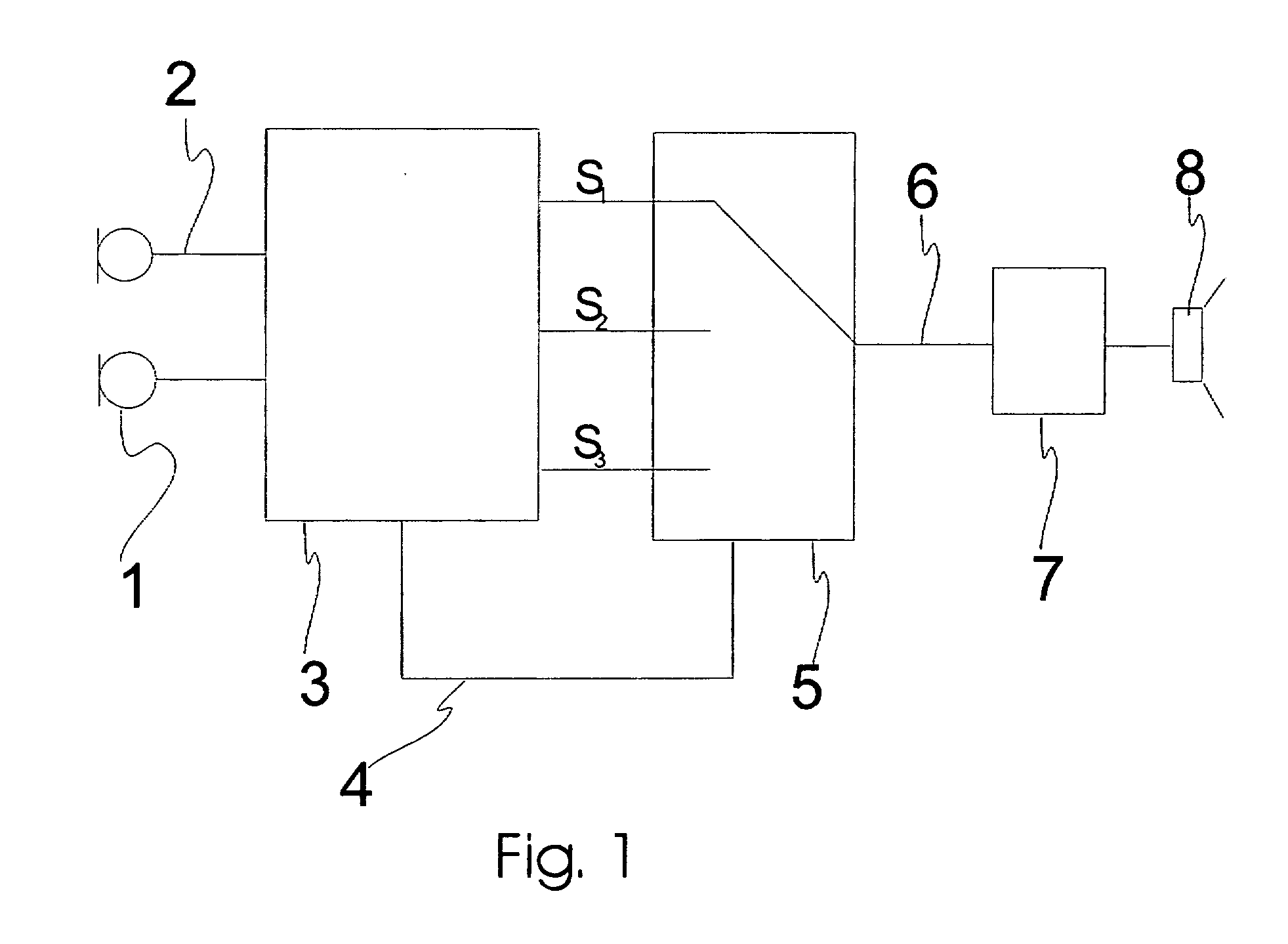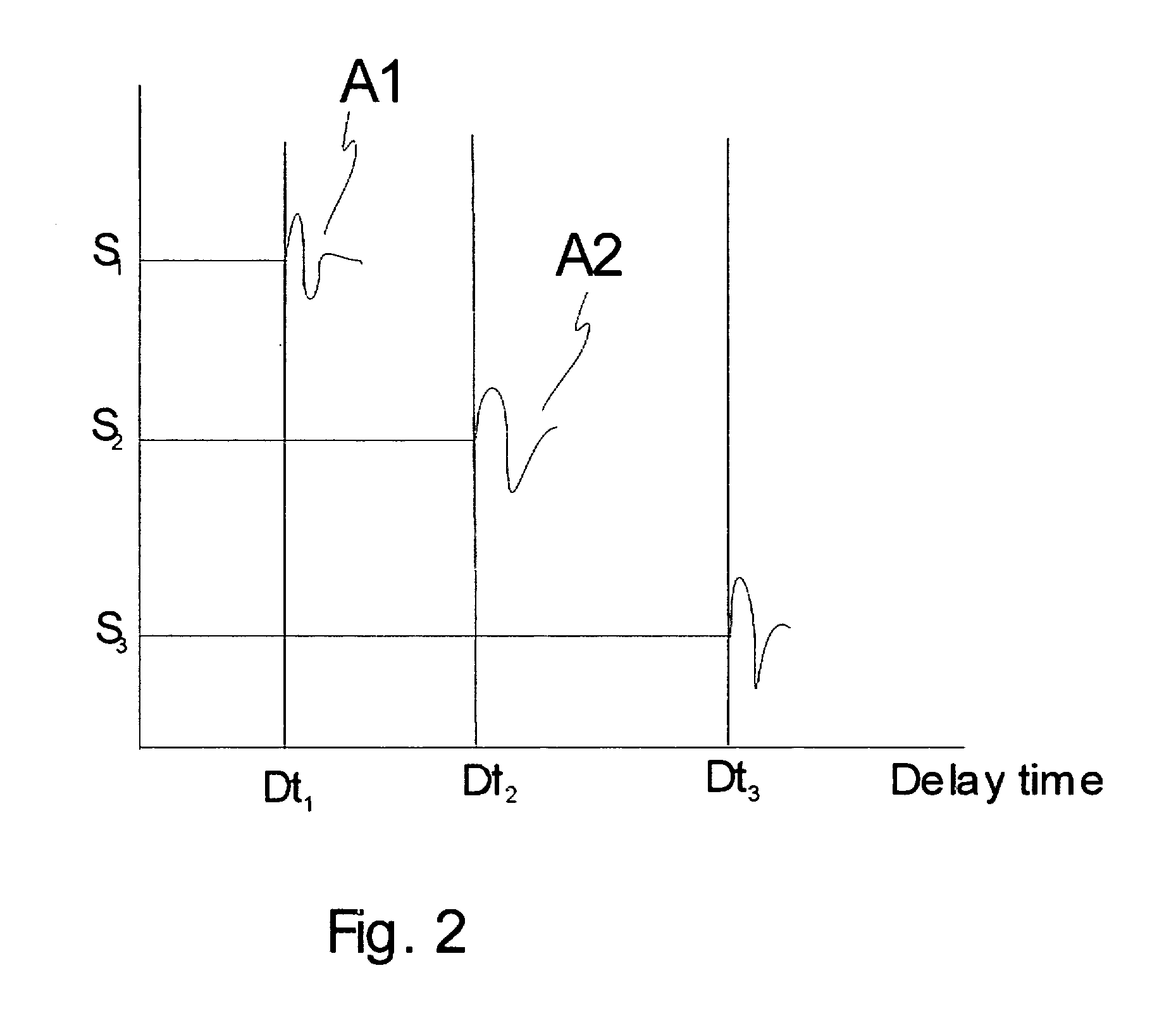Audio system with varying time delay and method for processing audio signals
a technology of audio signal and time delay, which is applied in the field of audio system with varying time delay and method for processing audio signals, can solve the problems of severely restricting the processing capabilities of a given audio system, poor sound quality, and the range of disturbing effects experienced by users, and achieves high background noise level, large throughput, and high demands on the anti-feedback system
- Summary
- Abstract
- Description
- Claims
- Application Information
AI Technical Summary
Benefits of technology
Problems solved by technology
Method used
Image
Examples
Embodiment Construction
[0021]FIG. 1 illustrates a simplified example of a hearing aid which embodies an example of the method according to the invention. A diagram of the signal path in a hearing aid is shown, whereby one or more microphones 1 are arranged to pick up environmental sounds. In the hearing aid other sound signals may be transmitted through the signal path, such as telecoil signals or other wireless or wired audio signal as well known in conventional hearing aids. The incoming signals 2 are digitized in the usual way (not shown in the figure) and routed to a digital signal processing unit (DSP) 3. Here a usual amplification and noise damping process is performed on the incoming signal as is usual in hearing aids. The method according to the invention allows two or more different algorithms to be performed on the audio signal in the DSP unit and thus delivering two or more output signals, illustrated in FIG. 1 by S1, S2 and S3. The algorithms have each their time delay Dt1, Dt2 and Dt3 as disp...
PUM
 Login to View More
Login to View More Abstract
Description
Claims
Application Information
 Login to View More
Login to View More - R&D
- Intellectual Property
- Life Sciences
- Materials
- Tech Scout
- Unparalleled Data Quality
- Higher Quality Content
- 60% Fewer Hallucinations
Browse by: Latest US Patents, China's latest patents, Technical Efficacy Thesaurus, Application Domain, Technology Topic, Popular Technical Reports.
© 2025 PatSnap. All rights reserved.Legal|Privacy policy|Modern Slavery Act Transparency Statement|Sitemap|About US| Contact US: help@patsnap.com



